AMD Ryzen Threadripper 1920X Review
Why you can trust Tom's Hardware
CPU Rendering, Scientific & Engineering Computations, & HPC Performance
CPU Workstation Performance
The 3D graphics performance we just measured isn’t all that matters to professional rendering software. Applications run many other tasks (like simulations, compute jobs, preview rendering) on the CPU simultaneously. The full picture’s only achievable by looking at both of them together.
Many modern suites include modules that are based exclusively on computing and simulations. This means we need to go beyond just 3D workstation performance to form our opinion of these high-end CPUs.
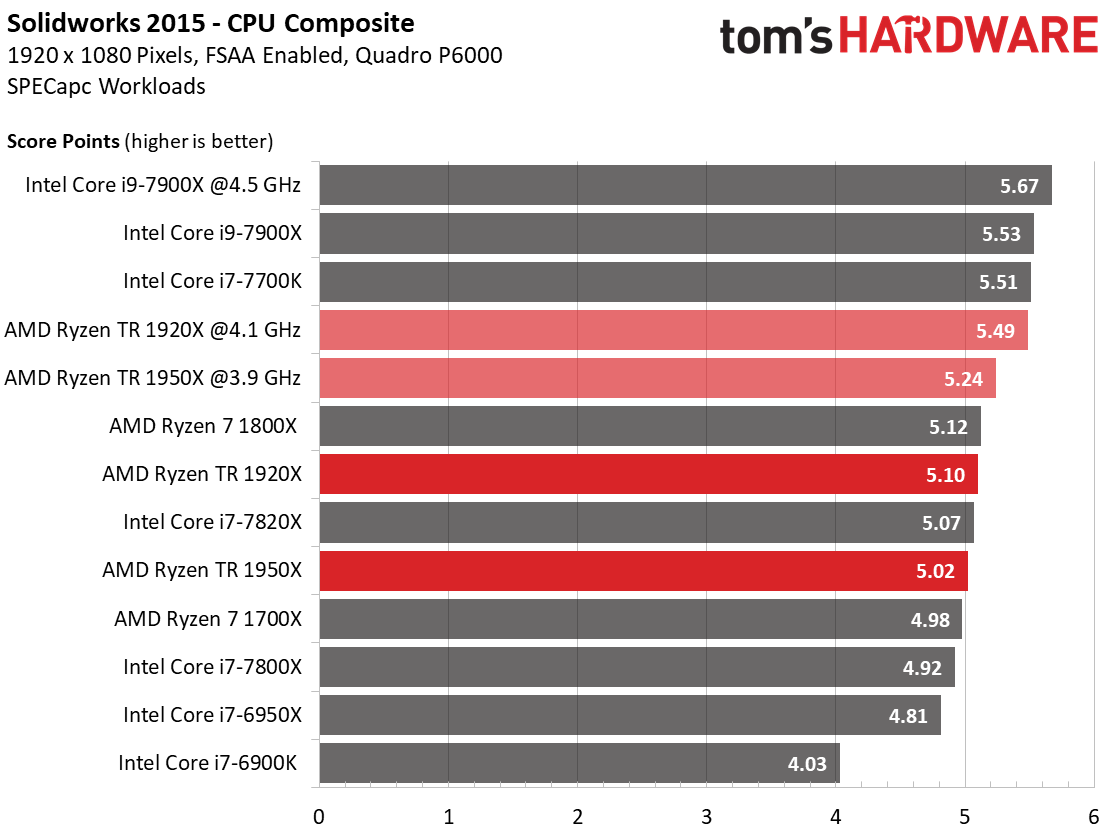
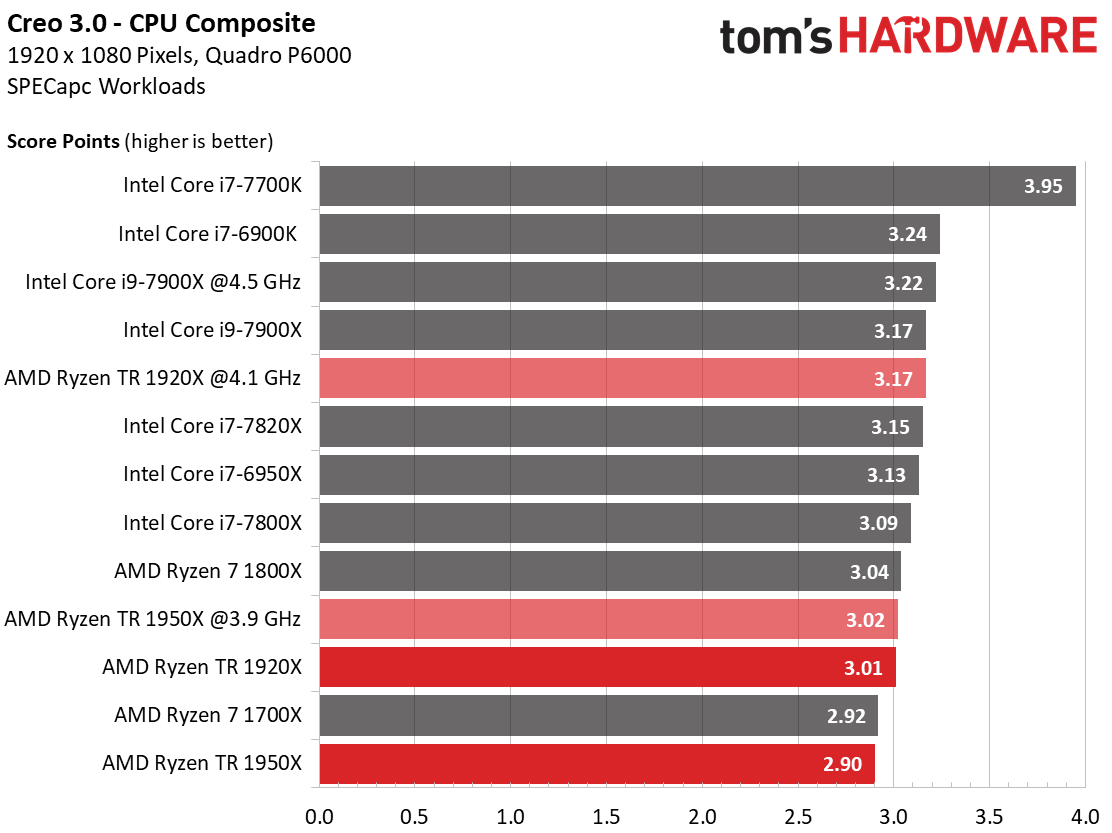
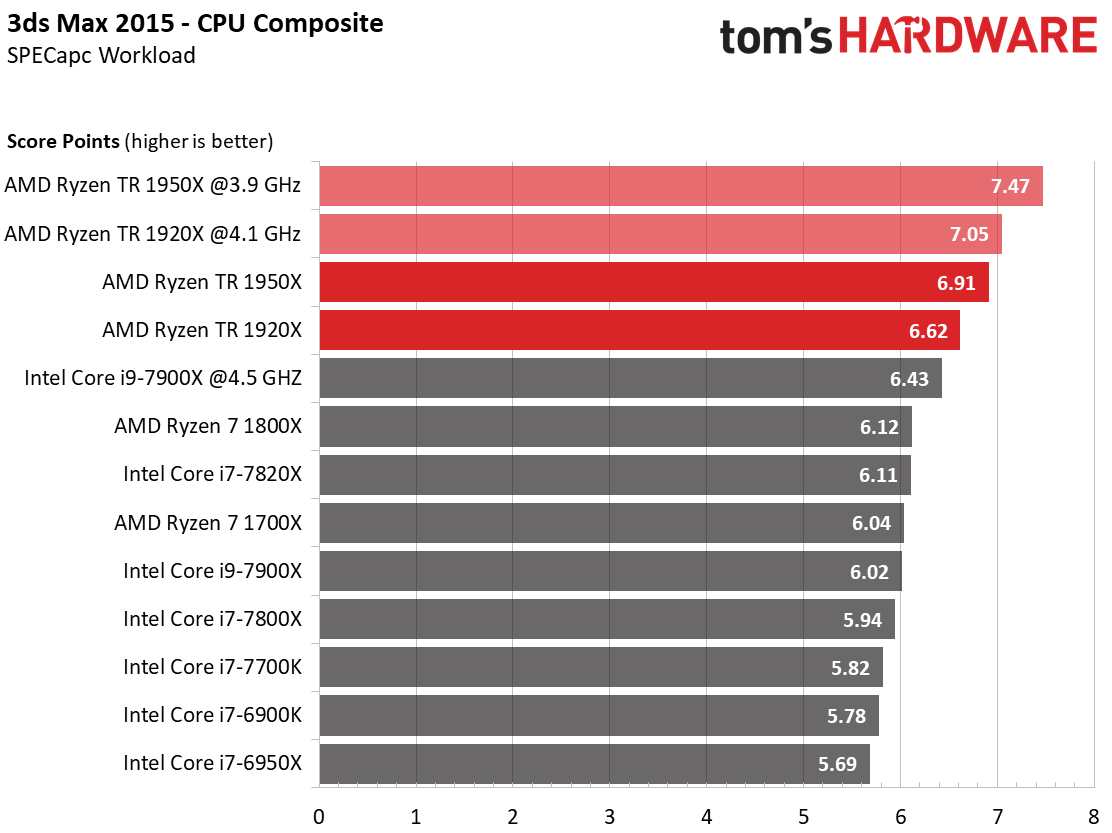
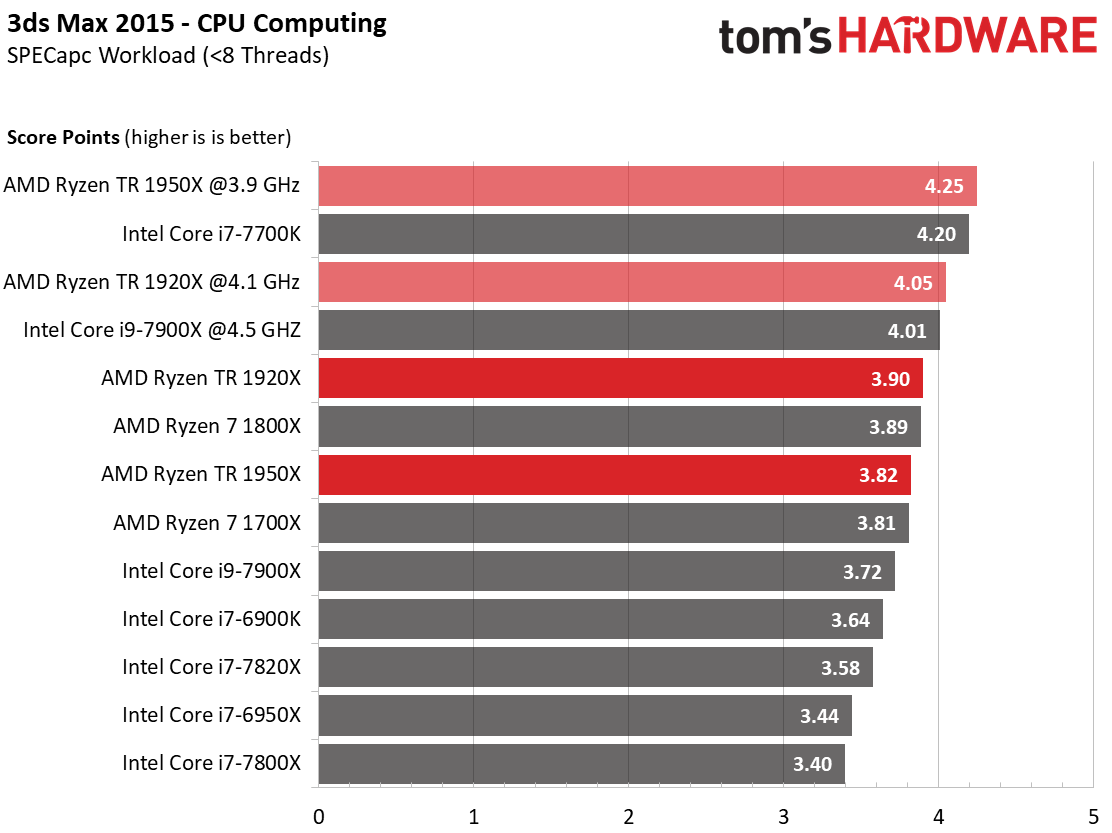
Threadripper offers solid performance in applications that respond well to IPC throughput and frequency, so the Threadripper 1920X leads its counterpart in the SolidWorks and Creo Composite tests. 3ds Max 2015's CPU Computing test benefits from both frequency and parallelism, rewarding the 1950X with a first-place finish when it's overclocked.
CPU Performance: Photorealistic Rendering
Final rendering doesn’t require a CPU that's good at everything. Rather, this task wants efficiency and fast parallel computation.
Nothing beats AMD’s Ryzen Threadripper when it comes to rendering in 3ds Max 2015. Core count is much more important than clock rate, which yields a predictable pecking order.

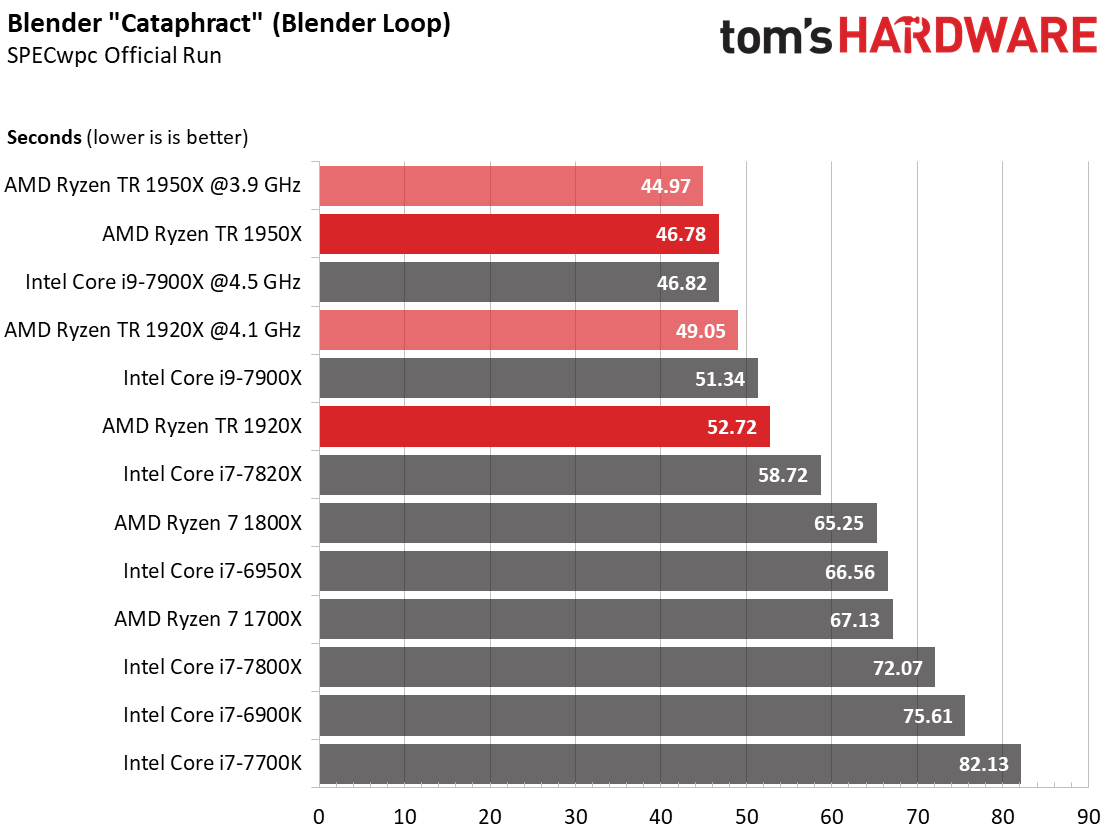
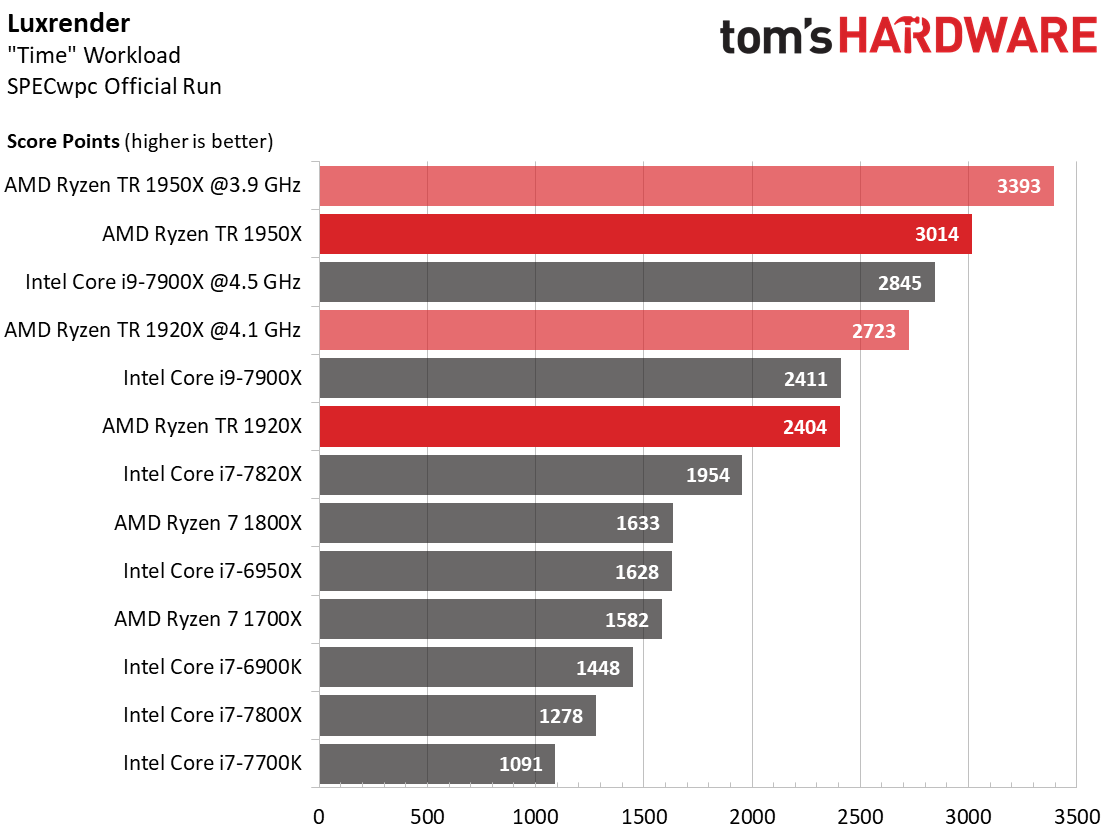
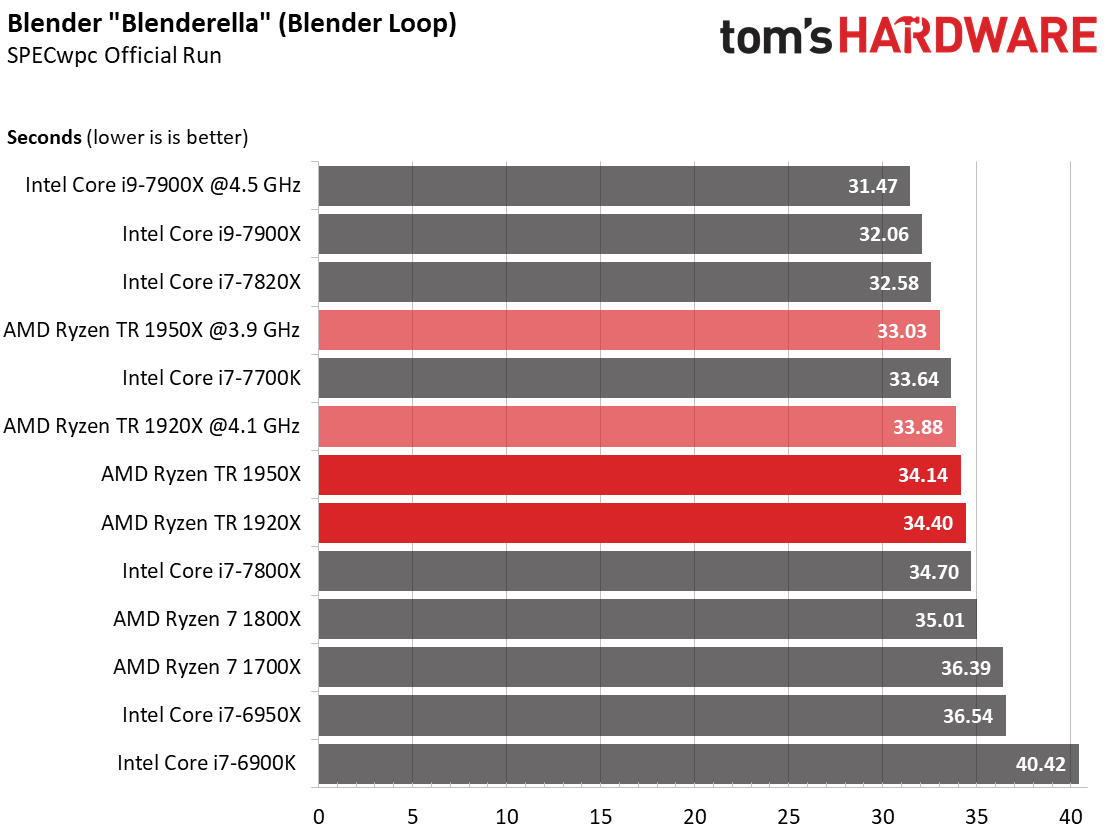
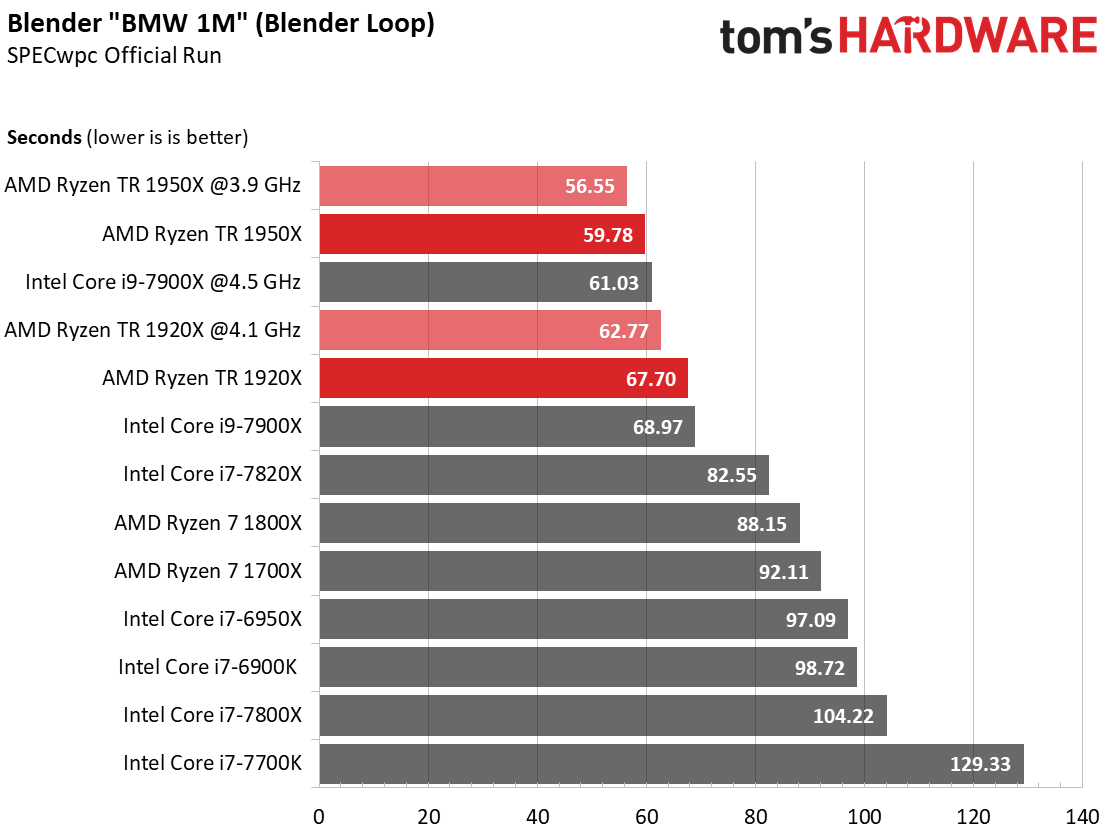
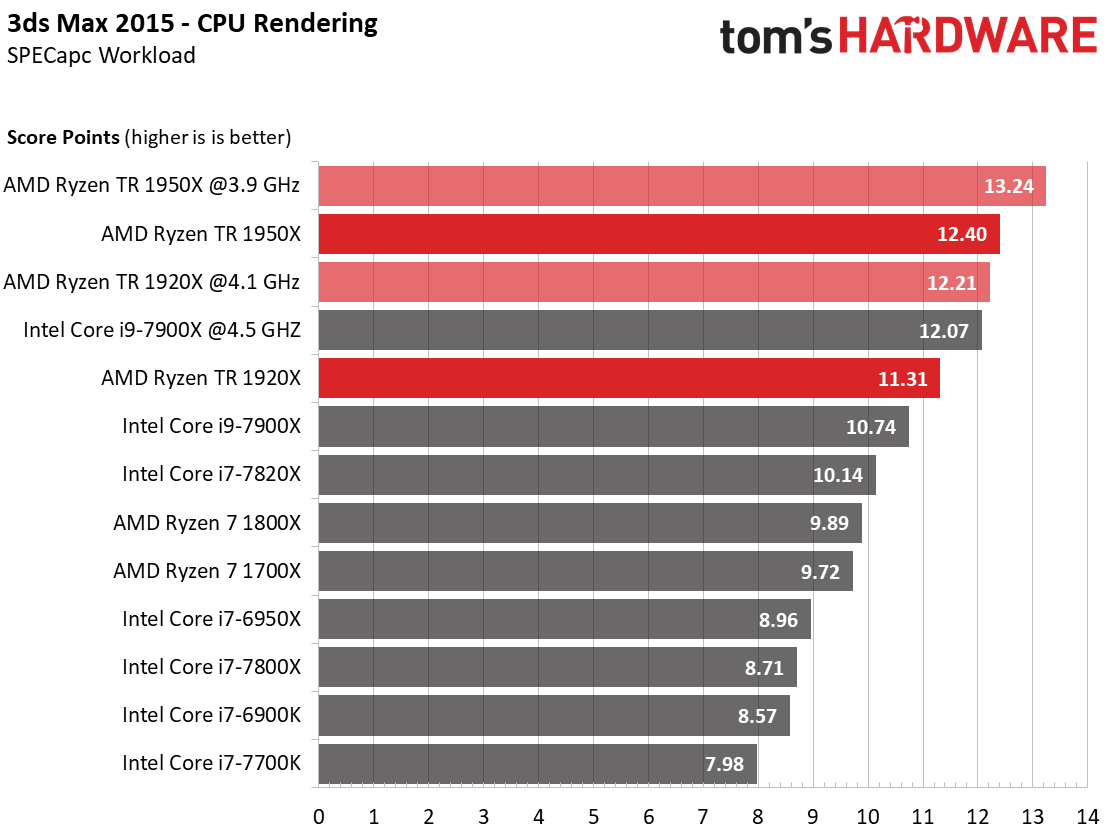
Most of the Blender tests naturally respond well to Threadripper's array of execution resources.
IPC throughput and clock rate become a factor during the "Blenderalla" workload, so Intel's Skylake-X processors assume the lead.
Get Tom's Hardware's best news and in-depth reviews, straight to your inbox.
Overall, the Threadripper products are great for semi-professional use and rendering workloads. Even when they don't win absolutely, they still offer performance that's competitive with Intel's similarly-priced models.
Scientific & Engineering Computations, & HPC Performance
For these tests, we use the SPECwpc benchmark suite for workstations with its wide variety of tasks. It runs a number of different mathematical computations optimized for parallelization. They typically make heavy use of available memory bandwidth and cache, plus expose issues with latency.
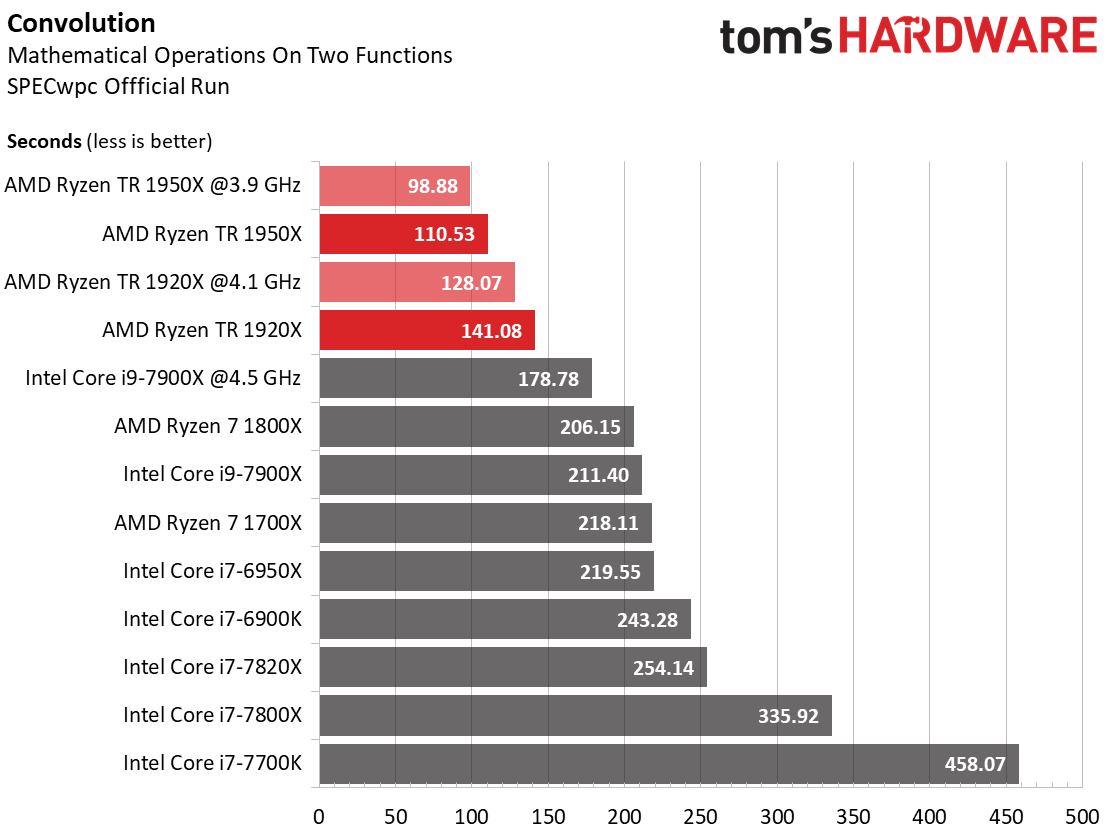
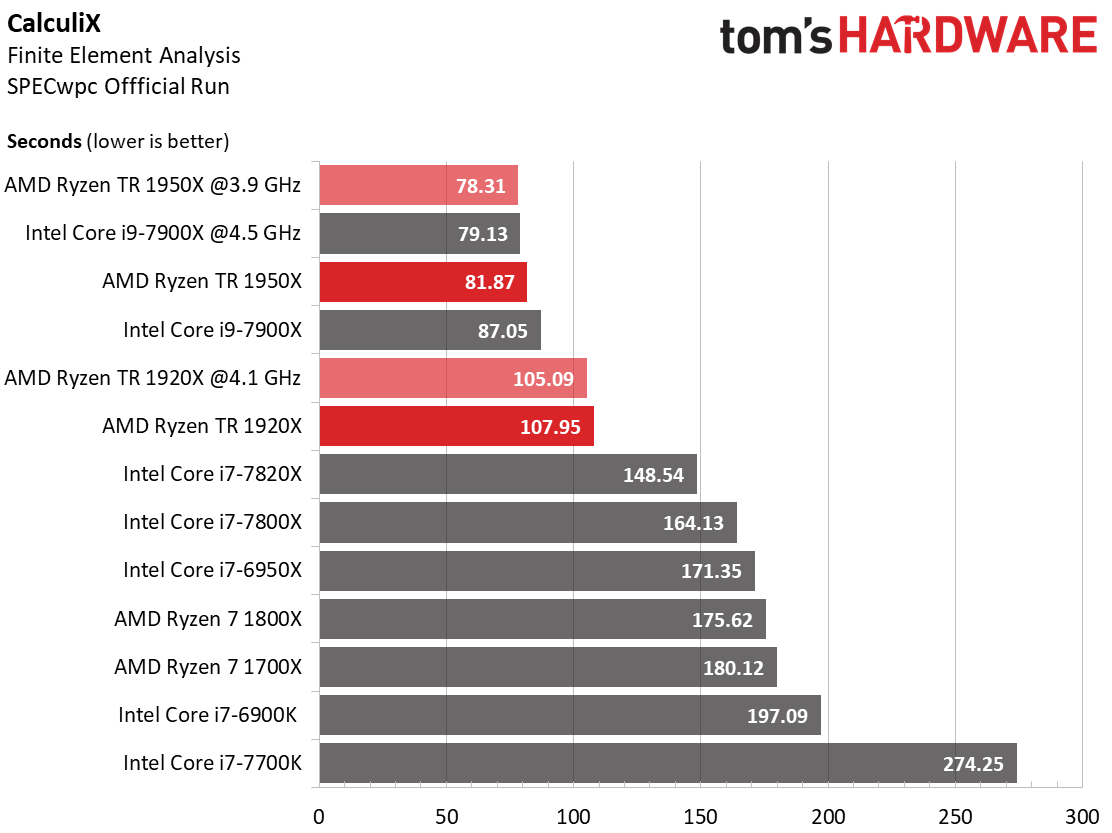
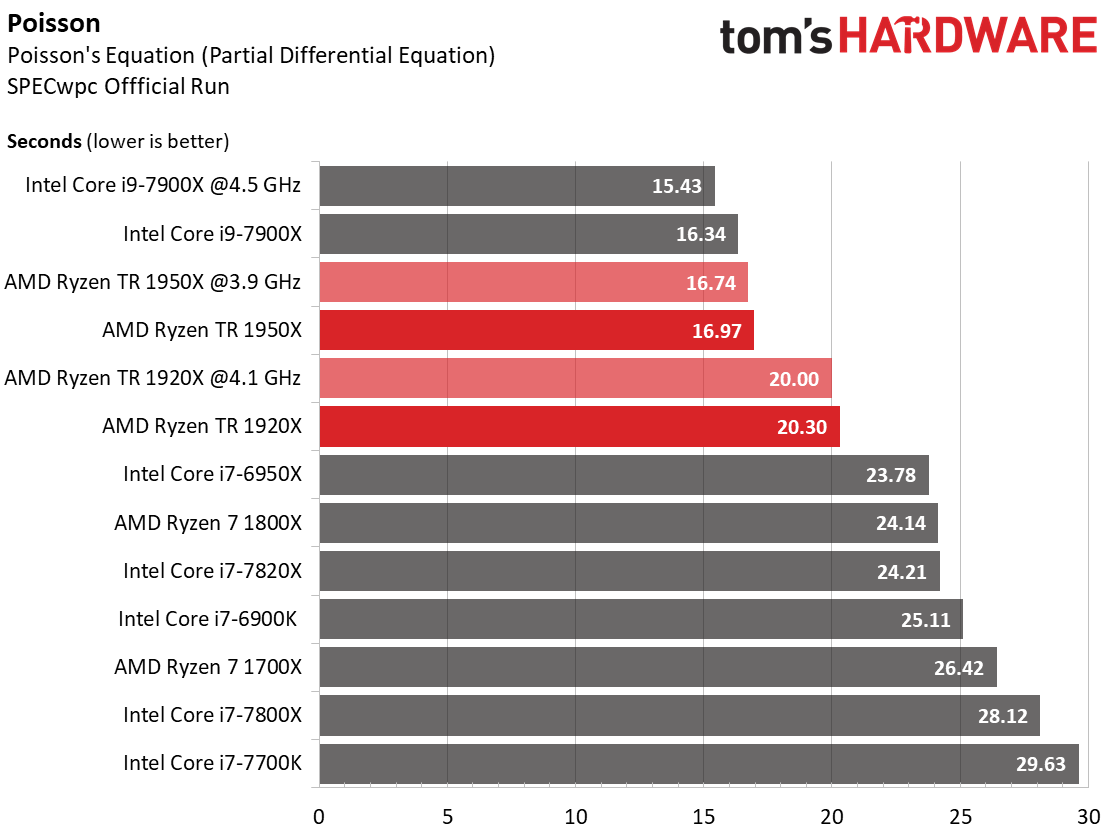
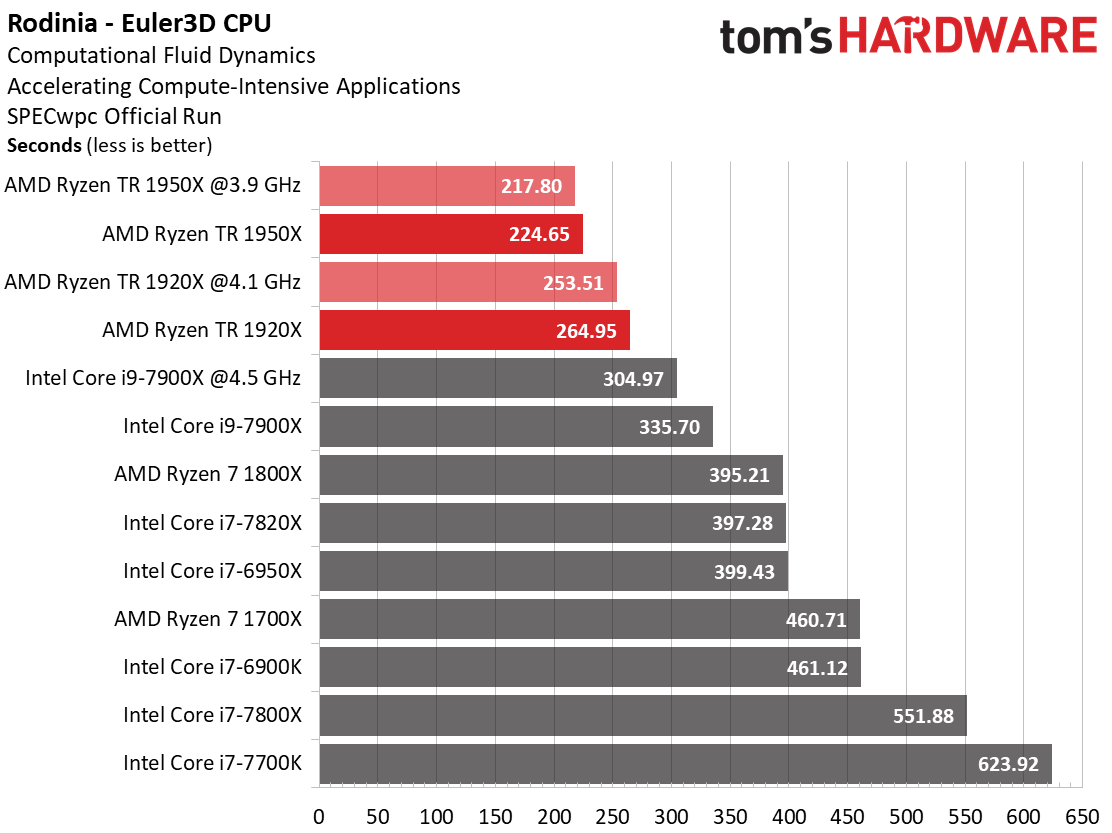
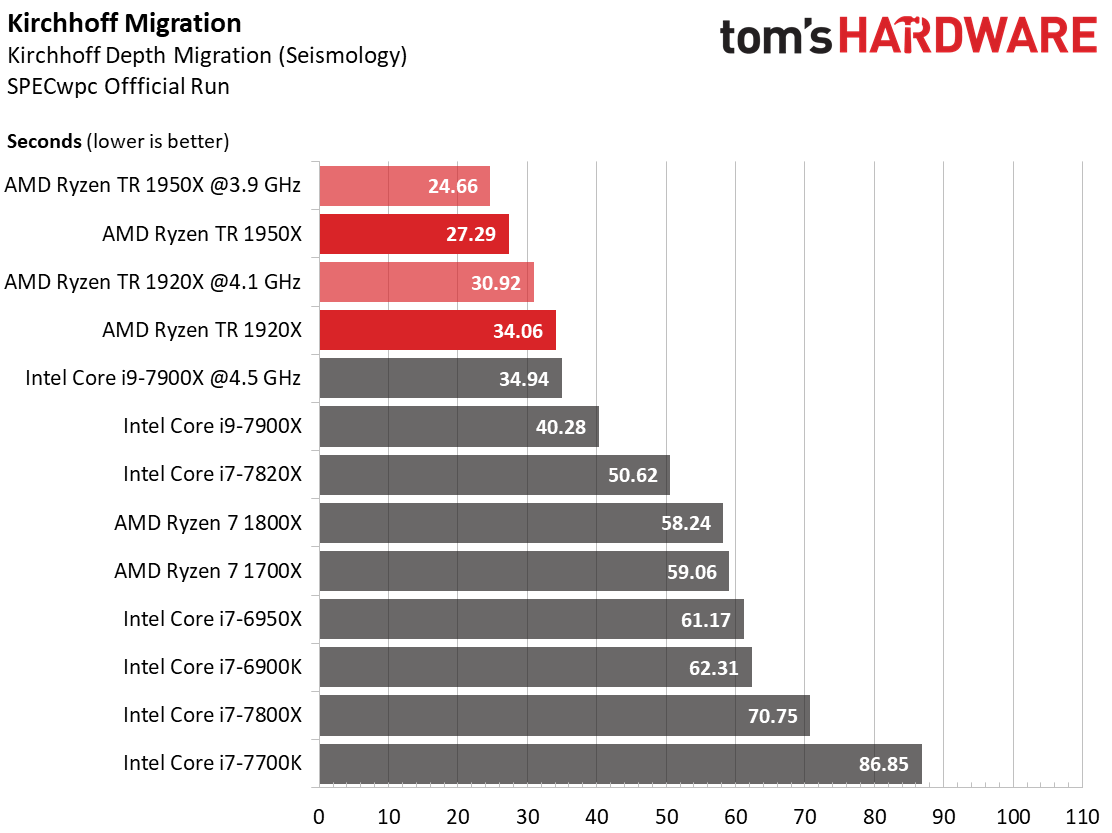

The convolution benchmark consists of an operation performed on two functions that results in a third function. Performance scales similarly well with core count and clock rate, allowing the Threadripper architecture to shine.
CalculiX is based on the finite element method for three-dimensional structural computations. In this test, Ryzen Threadripper 1950X bests Intel's -7900X, while the 1920X leads the rest of the field.
SRMP algorithms are used for discrete energy minimization, and none of the AMD entrants handle them well, suggesting the benchmark might be latency-sensitive.
The Kirchhoff Migration test plays well with AMD's Threadripper design, though, so the company's highest-end chips lead the field by an impressive margin.
MORE: Best CPUs
MORE: Intel & AMD Processor Hierarchy
MORE: All CPUs Content
Current page: CPU Rendering, Scientific & Engineering Computations, & HPC Performance
Prev Page 2D & 3D Workstation Performance Next Page Overclocking, Cooling & Temperature
Paul Alcorn is the Editor-in-Chief for Tom's Hardware US. He also writes news and reviews on CPUs, storage, and enterprise hardware.
-
Aldain Great review as always but on the power consumption fron given that the 1950x has six more cores and the 1920 has two more they are more power efficient than the 7900x is every regard relative to the high stock clocks of the TRReply -
derekullo "Ryzen Threadripper 1920X comes arms with 12 physical cores and SMT"Reply
...
Judging from Threadripper 1950X versus the Threadripper 1900X we can infer that a difference of 400 megahertz is worth the tdp of 16 whole threads.
I never realized HT / SMT was that efficient or is AMD holding something back with the Threadripper 1900x? -
jeremyj_83 Your sister site Anandtech did a retest of Threadripper a while back and found that their original form of game mode was more effective than the one supplied by AMD. What they had done is disable SMT and have a 16c/16t CPU instead of the 8c/16t that AMD's game mode does. http://www.anandtech.com/show/11726/retesting-amd-ryzen-threadrippers-game-mode-halving-cores-for-more-performance/16Reply -
Wisecracker Hats-off to AMD and Intel. The quantity (and quality) of processing power is simply amazing these days. Long gone are the times of taking days off (literally) for "rasterizing and rendering" of work flowsReply
...or is AMD holding something back with the Threadripper 1900x?
I think the better question is, "Where is AMD going from here?"
The first revision Socket SP3r2/TR4 mobos are simply amazing, and AMD has traditionally maintained (and improved!) their high-end stuff. I can't wait to see how they use those 4094 landings and massive bandwidth over the next few years. The next iteration of the 'Ripper already has me salivating :ouch:
I'll take 4X Summit Ridge 'glued' together, please !!
-
RomeoReject This was a great article. While there's no way in hell I'll ever be able to afford something this high-end, it's cool to see AMD trading punches once again.Reply -
ibjeepr I'm confused.Reply
"We maintained a 4.1 GHz overclock"
Per chart "Threadripper 1920X - Boost Frequency (GHz) 4.0 (4.2 XFR)"
So you couldn't get the XFR to 4.2?
If I understand correctly manually overclocking disables XFR.
So your chip was just a lotto loser at 4.1 or am I missing something?
EDIT: Oh, you mean 4.1 All core OC I bet. -
sion126 actually the view should be you cannot afford not to go this way. You save a lot of time with gear like this my two 1950X rigs are killing my workload like no tomorrow... pretty impressive...for just gaming, maybe......but then again....its a solid investment that will run a long time...Reply -
AgentLozen Replyredgarl said:Now this at 7nm...
A big die shrink like that would be helpful but I think that Ryzen suffers from other architectural limitations.
Ryzen has a clock speed ceiling of roughly 4.2Ghz. It's difficult to get it past there regardless of your cooling method.
Also, Ryzen experiences nasty latency when data is being shared over the Infinity Fabric. Highly threaded work loads are being artificially limited when passing between dies.
Lastly, the Ryzen's IPC lags behind Intel's a little bit. Coupled with the relatively low clock speed ceiling, Ryzen isn't the most ideal CPU for gaming (it holds up well in higher resolutions to be fair).
Threadripper and Ryzen only look as good as they do because Intel hasn't focused on improving their desktop chips in the last few years. Imagine if Ivy Bridge wasn't a minor upgrade. If Haswell, Broadwell, Skylake, and Kabylake weren't tiny 5% improvements. What if Skylake X wasn't a concentrated fiery inferno? Zen wouldn't be a big deal if all of Intel's latest chips were as impressive as the Core 2 Duo was back in 2006.
AMD has done an amazing job transitioning from crappy Bulldozer to Zen. They're in a position to really put the hurt on Intel but they can't lose the momentum they've built. If AMD were to address all of these problems in their next architecture update, they would really have a monster on their hands. -
redgarl Sure Billy Gates, at 1080p with an 800$ CPU and an 800$ GPU made by a competitor... sure...Reply
At 1440p and 2160p the gaming performances is the same, however your multi-threading performances are still better than the overprices Intel chips.